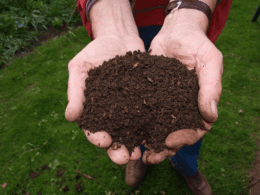Are you tired of constantly battling weeds in your garden? Do you want an affordable and eco-friendly solution to control them? Look no further than cardboard! Yes, you read that right, cardboard can be used as a weed barrier in your garden.
It’s not only free and abundant, but it’s also easy to install and breaks down naturally without leaving harmful chemicals behind. Using cardboard as a weed blocker is a safe and effective way to keep your garden free of unwanted plants. You don’t have to worry about harmful chemicals seeping into the soil or harming your pets and children.
Plus, it’s a great way to recycle and reuse materials, reducing your carbon footprint. In this article, we’ll explore the benefits and drawbacks of using cardboard, the best locations to use it, and how to properly install it for maximum weed control. Get ready to say goodbye to pesky weeds and hello to a healthier, more sustainable garden!
Quick Takeaways
- Cardboard is an affordable and eco-friendly option for weed control
- Installation and maintenance of cardboard as a weed barrier involves preparing the area, cutting and overlapping pieces, and securing with ground stakes
- While cardboard has benefits such as natural biodegradation and attracting earthworms, it also has downsides like quick degradation and potential for animals to dig through it
- Alternatives to cardboard include newspaper, landscape fabric, mulch, and commercial weed fabric, and individual garden needs should be considered when choosing a weed control option.
Pros and Cons
You’ll want to consider the pros and cons of using cardboard as a weed barrier.
On the plus side, cardboard is free and easy to install, covering large areas at once. It also allows water to penetrate, while blocking sunlight from reaching weeds. Additionally, cardboard decays without leaving harmful chemicals and attracts beneficial earthworms.
However, there are some downsides to using cardboard as a weed barrier. You’ll need to remove staples and tape before use, and it can biodegrade quickly, requiring frequent replacement. Birds or animals may also dig through it, and it may not be the most attractive option.
When considering long term effectiveness, alternatives to cardboard may need to be explored.
Despite the drawbacks, using cardboard as a weed barrier can be an effective and eco-friendly option for your garden. It’s important to note that maintenance is key to ensure its continued effectiveness. An alternative to cardboard may be using a commercial weed fabric, which can be more durable. However, this option is not as environmentally friendly and can be more expensive.
Ultimately, weighing the pros and cons of each option and considering your individual garden needs will help you make the best decision for weed control.
Best Locations
For optimal results, consider using this method in areas where pesky plants tend to grow. Using cardboard as a weed barrier can be especially effective in garden layouts where it’s difficult to keep up with weeding.
By blocking sunlight and preventing weed growth, cardboard can help you maintain a beautiful and healthy garden with minimal effort. In addition to being an eco-friendly option, cardboard can also save you money on expensive weed prevention techniques.
By using cardboard boxes you already have on hand, you can create an effective barrier without spending a dime. So if you’re looking for an affordable and low-maintenance way to keep your garden weed-free, give cardboard a try.
Steps for Installation
To install the weed barrier, start by preparing the area where you want to block weeds. Remove any existing weeds or grass and level the soil as best you can.
Then, take your brown cardboard boxes and cut them to fit the size of the space you want to cover. Avoid using boxes with a lot of ink printing as this may contain harmful chemicals. Overlap each piece by several inches to prevent weed growth between cracks, and cut openings around stems or trunks of plants and trees.
Once your cardboard pieces are cut to size, lay them on the prepared area. Wet the entire area with a hose or water after laying down mulch or rocks. This will help the cardboard to decompose faster. If desired, you can also secure the cardboard with ground stakes and a hammer.
To maximize effectiveness, reapply the cardboard barrier when new weed growth appears. If you’re looking for alternatives to cardboard, consider using newspaper, landscape fabric, or mulch. Just be sure to avoid using wood mulch around your home’s foundation if termites are a concern.
Frequently Asked Questions
Can cardboard be used as a weed barrier in all types of soil?
Yes, cardboard can be used as a weed barrier in all types of soil. However, the benefits of using cardboard as a weed blocker in organic gardening and techniques for properly installing cardboard as a weed barrier in different soil types may vary.
How long does it typically take for the cardboard to biodegrade?
Cardboard biodegrades quickly, making it an eco-friendly option for weed control. To ensure success, properly prepare the area and cardboard by removing tape and staples. Overlap pieces and reapply when new growth appears.
Is cardboard a good option for preventing weeds in vegetable gardens?
To prevent weeds in your vegetable garden, recycling cardboard is a great option with many benefits. Prepare it by removing tape and staples, cutting it to size, and overlapping pieces. It’s eco-friendly and attracts worms.
Will the cardboard attract pests or insects to the garden?
You might have pest concerns, but using cardboard as a weed barrier actually has gardening benefits. It attracts worms and decays without leaving behind harmful chemicals. Just make sure to remove staples and tape before use.
Can cardboard be used in combination with chemical weed killers?
Using cardboard with weed killers may not be effective as the chemicals may not penetrate the cardboard. It’s also important to note that using chemical weed killers goes against the eco-friendly aspect of using cardboard as a weed barrier.









